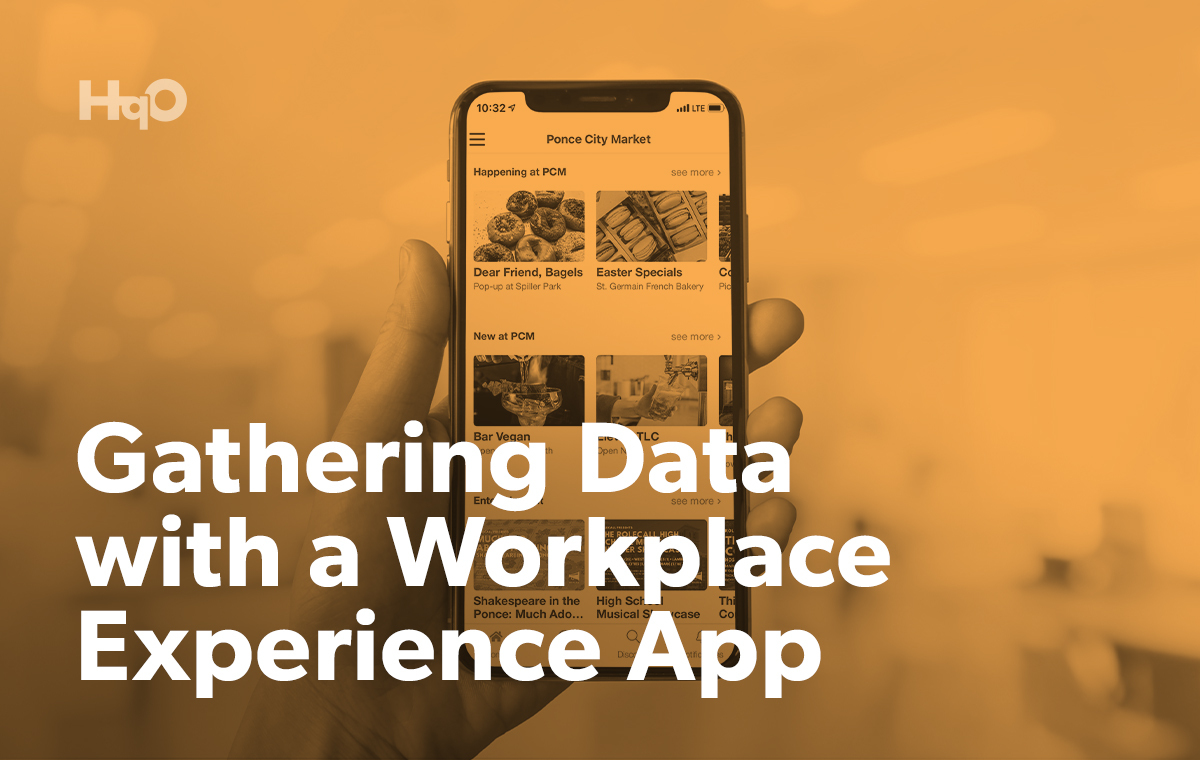According to HqO’s State of Workplace Experience report, a growing number of landlords and commercial real estate (CRE) companies view data as significantly important to their overall business strategies. Moreover, a large majority of respondents (76%) surveyed in that report said that they already collect (or are looking to collect) data from a workplace experience app. This finding shows that landlords have largely recognized the need to utilize new technology that is capable of collecting all tenant engagement data in one place, thus providing a complete, consistent picture of asset activity in real-time.
But how does a workplace experience app work? And what kinds of data can it produce for landlords and CRE companies? Follow along below to learn more, and consider downloading the Data Difference guide.
Key Data Points Provided by a Building Mobile App
When landlords decide to implement a workplace app at one of their properties, tenant employees download the app on their mobile devices, and — from that point on — use the app to gain access to physical spaces, engage with amenities, order food from local partners, and so on. Importantly for landlords, all of this activity generates data, which is valuable to CRE companies and property teams that are looking to improve the tenant experience, tailor investment decisions, and boost net operating income (NOI) across their portfolios.
In order to better understand the value that a workplace app brings to a property or portfolio, however, it’s important to first have a firm understanding of the various kinds of data it generates.
The HqO app, for example, provides landlords with real-time, automated data on four different areas relevant to the tenant experience: spaces, people, experiences, and tenant feedback. Below, find brief overview of the kinds of data the app can provide:
- Spaces
- Overview of space offerings
- Usage of physical/digital amenities
- Resource booking data
- People
- Building population data
- Occupant engagement data
- Information on tenant company preferences
- Experiences
- Amenities and experience data
- Programming utilization data
- Tenant Feedback
- Overall property rating
- Most important amenities
- Tenant satisfaction with amenities
- Custom and open-ended feedback
These numerous functionalities can give landlords a wealth of data that they can use to make smarter business decisions. Still, while the data by a building mobile app is aggregated and anonymous, tenants and landlords alike need to make sure that their data is protected. In order to ensure the full security of tenant data, landlords and property teams need to work with a vendor that has attained the rigorous SOC-2 and ISO certifications for data privacy, which demonstrate a deep, institutional commitment to privacy. HqO has achieved these integrations since 2021.
Increased Use of Mobile App Data
The State of Workplace Experience report shows that a majority of landlords are currently looking to use data from a building app to better tailor their business decisions. This indicates that the market is now moving rapidly towards greater integrations and the use of more meaningful data. In order to keep pace with the market, landlords must act quickly, or, otherwise, run the risk of falling behind.
Broadly speaking, HqO’s research delineates three groups of companies with regards to the use of data analytics in the CRE space: (1) those who have already made the shift toward more meaningful data analytics are leaders in the market; (2) those who are currently looking to make the shift are running par for the course; (3) those who have no plans to make the shift are now at risk of being left behind.
Using HqO to Gather Workplace Data
It’s important to remember why the market is headed toward the use of more meaningful data analytics: because landlords have come to understand that harnessing the power of real-time behavioral and sentiment data will allow them to make impactful and efficient use of capital, while also increasing asset value, tenant retention, and NOI.
The HqO Workplace Experience Platform is also easy to use and streamlined, offering both broad strokes in the form of intuitive overviews and fine detail with granular control over a variety of office functions and features. It also serves as a digital backbone for offices of the future, which will and are seeing employees working how, when, and where they like.
Interested in learning more? Download HqO’s Data Difference guide now to understand how data from a workplace experience app can help you optimize your properties.



